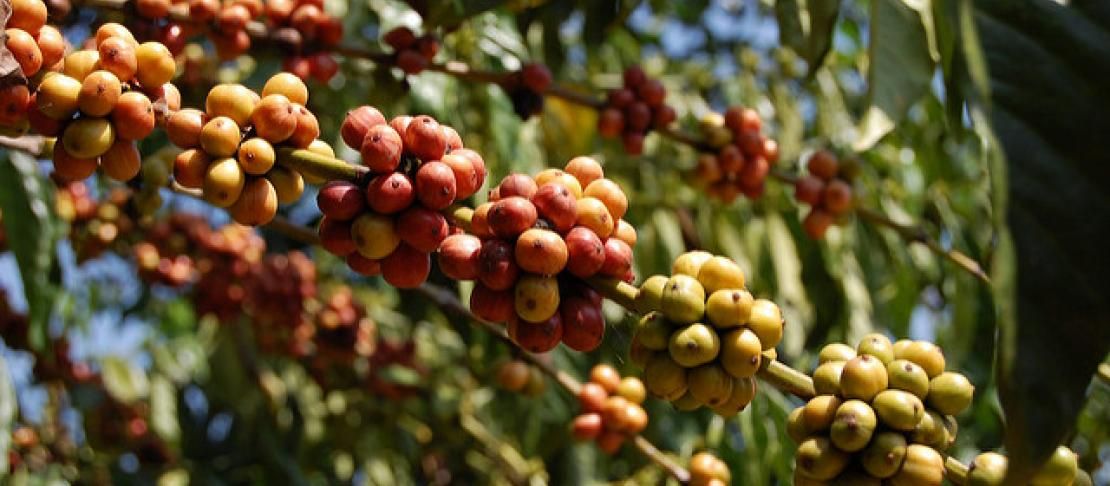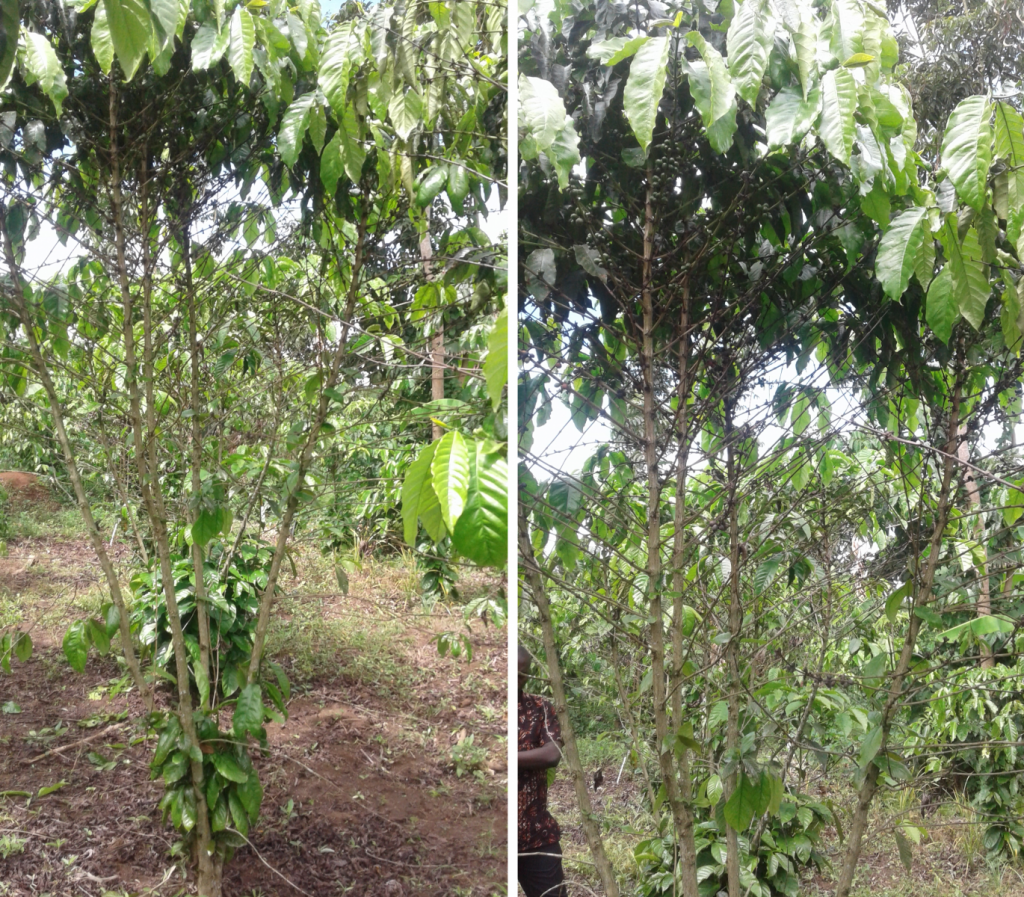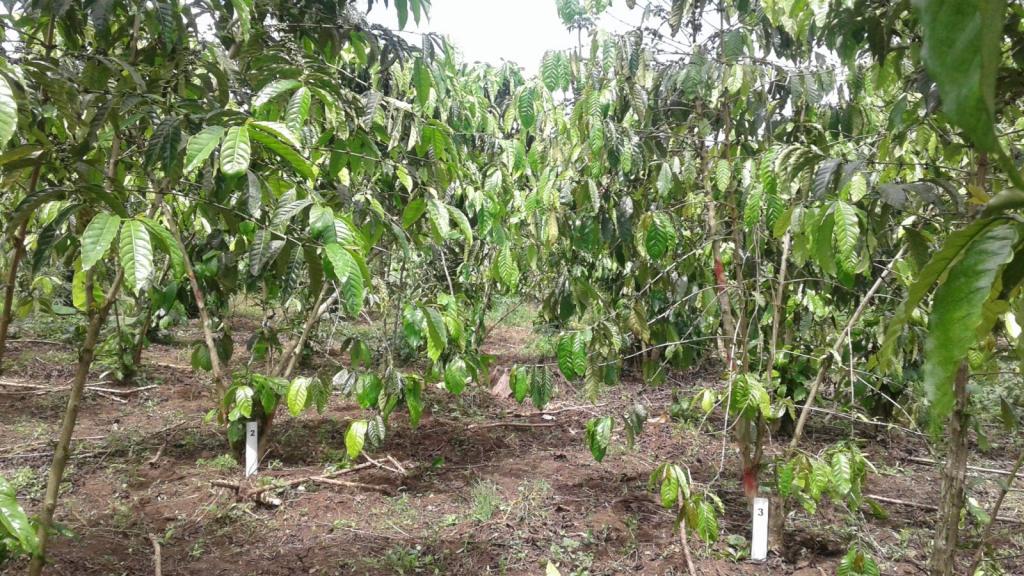Improving smallholder coffee productivity one step at a time

By implementing climate-smart agriculture practices one step at a time, coffee farmers can improve their coffee quality and productivity with the resources they have.
The Government of Uganda hopes to more than triple its annual coffee exports from the current 4 million 60 kg bags to 20 million 60 kg bags by 2020. With the current climate variability and trends in future climatic change, the goal will not be met without more intrinsic changes, such as increased adoption of climate-smart agricultural (CSA) practices by farmers.
As a response to the lack of adoption of CSA practices in coffee production, the International Institute of Tropical Agriculture (IITA), in collaboration with its partners, developed an approach that enables resource-constrained farmers to incrementally invest in CSA practices to cope with the effects of climate change. The stepwise investment pathways approach guides farmers on how to invest in their coffee in a stepwise manner, with the hope that part of the profits realized from implementing these practices will be reinvested in the coffee, in order to move to the next step in the pathway.
IITA, as part of the CGIAR Research Program on Climate Change, Agriculture and Food Security (CCAFS), partnered with Hanns R. Neumann Stiftung (HRNS) to establish trial sites in Luwero district of Uganda. The demonstration plots were established to showcase the stepwise approach for coffee. Each plot demonstrates the practices for a given step. For each site, a willing host farmer fitting the criteria developed was identified and the demo plots were set up on their land.
Luwero district is one of the Robusta coffee-growing districts of Uganda. Through a prioritization method, stakeholders in the region adapted the national stepwise investment pathways to the Luwero context. The practices of step one include cultural weed control and de-suckering. Step two includes all the practices of step one, adding manure application, pruning and cultural control of black coffee twig borer and coffee wilt disease. Step three includes step one, step two, and mulching; step four is all the previous steps plus the application of fertilizer and pesticide.
Early wins
Mr. Ssozi Elisha of the village Butanza, part of the sub-county Katikamu, has not been able to get a meaningful coffee harvest due to the severe impacts of climate change. The prolonged drought experienced in the past two years has increased water stress and flower abortion and heightened the incidence of pests and diseases such as black coffee twig borer, root mealybug, and coffee wilt disease.
Photos taken at Ssozi’s farm where the simple stepwise investment pathways are being tested:

Left, a tree in the step one demo plot where only minimal management was applied. Right is a closeup of one of the trees in this plot affected by black coffee twig borer and coffee wilt disease. Photos: F. A. Okiror (IITA)

Group photo of some coffee trees in the step 2 demo plot that received some manure. The trees here were healthier and more vegetative. Photo: F. A. Okiror (IITA)

Demo plot three, where in addition to the treatments of step one and two, mulch was applied. Photo: F. A. Okiror (IITA)
The remarkable difference Ssozi has observed in the demo plots in the past six months is a ray of hope for his coffee amid the turbulent climate change conditions. According to Ssozi, the coffee in step one experienced severe flower abortion due to the drought, high level of black coffee twig borer infestation and dried twigs. In step two, the coffee plants were observed to be more vegetative and healthier due to manure application. In step three, where the coffee was mulched, fewer flowers had aborted despite the drought. The coffee trees in step three had coffee berries growing as opposed to the trees of the demo plot of step one, where there were almost none. Ssozi is positive and looking forward to implementing the stepwise investment pathway across his whole coffee field to attain higher coffee yields and better-quality coffee.
The stepwise approach has been lauded not only by the HRNS team, but also by the farmers who have had the opportunity to test it. They testify to the financial accessibility of adopting the practices one step at a time and the evident improvement in the coffee as one moves higher in the pathway. According to Charles Lwanga, the HRNS field officer for Luwero, 60% of smallholder coffee farmers are resource poor and therefore need a stepwise approach to effectively utilize the resources they have, to improve their coffee quality and increase productivity.
Read more:
Faith A. Okiror is the Communication and Behaviour Change Specialist at IITA.



